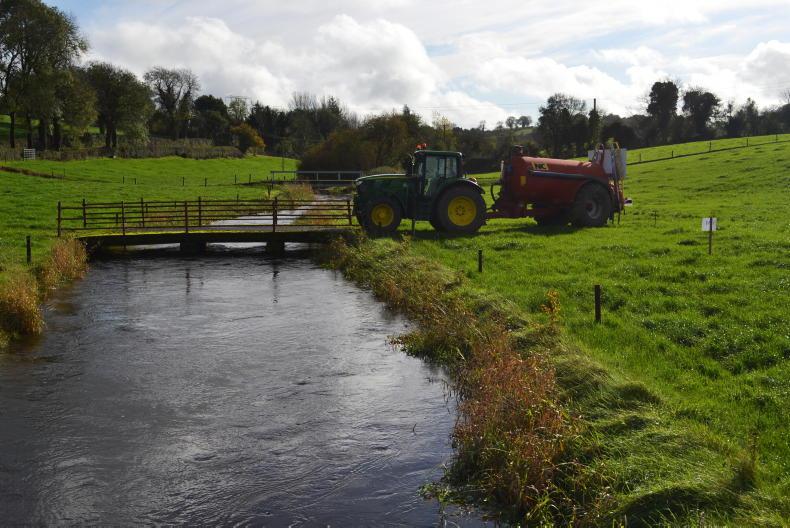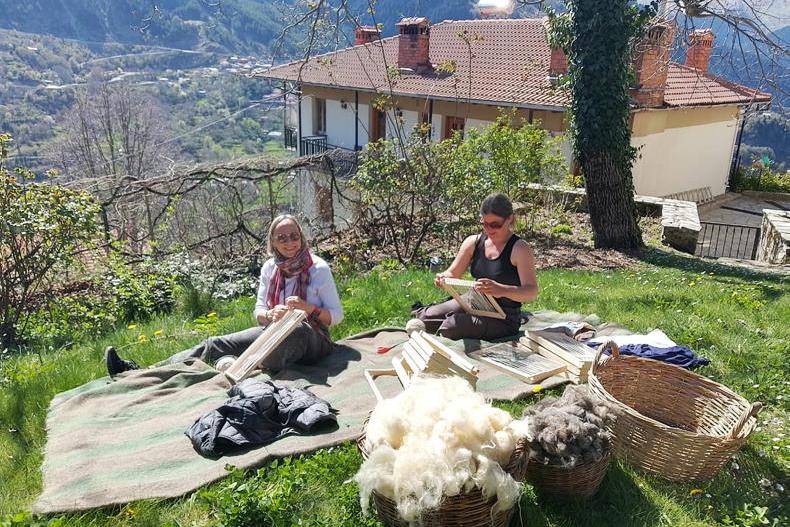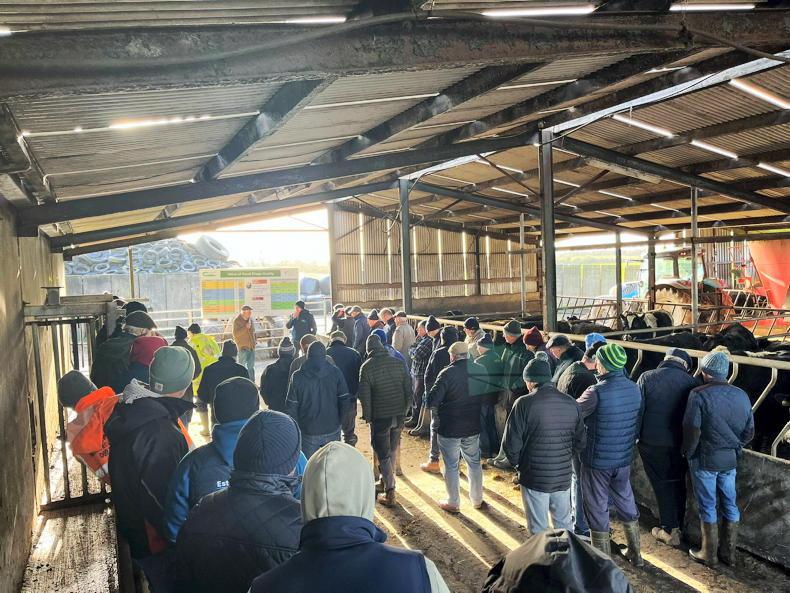We are now in the middle of the busy season for fertiliser spreading and spraying and protection of our waterways is essential when tackling these jobs.
Adhering to buffer zones is a key part of these jobs, whether it’s a splash plate, trailing shoe, wagtail or a sprayer with low-drift nozzles.
So what is a buffer zone?
A buffer zone is an area of land beside a watercourse which does not receive any agricultural inputs. It is not cultivated and cannot be planted with a tillage crop. On farms with stocking rates over 170kg organic N/ha, a fence should be in place 1.5m from the watercourse so that stock cannot graze beside the watercourse.
On all farms, artificial fertiliser cannot be applied within 2m of a watercourse, while organic manures cannot be applied within 10m of a watercourse. This distance increases to 20m in the first two weeks of the open period and two weeks prior to the beginning of the closed periods for organic manures.
This zone can increase to as much as 200m where the watercourse is feeding a water supply. See Table 1.
How do you identify a watercourse?
Watercourses are marked with a solid blue line on the Ordnance Survey Ireland maps or with a dashed dark blue on your Basic Payment Application.
Why is the buffer there?
Where fertiliser, organic manures or plant protection products are applied beside a watercourse, nutrients and chemicals can make their way into the water and not only pollute that water, but also pollute water which it flows into.
High phosphorus levels can cause eutrophication of water, while high nitrate levels can cause plants and algae to increase in levels in waterways and also cause harm to human health where it enters drinking water sources.
Pesticides can cause harm to aquatic life and contaminate drinking water sources. Too much of any of these pollutants can also cause harm to aquatic life.
Management of the buffer zone
Buffer zones beside watercourses should not be cultivated and, ideally, should have plenty of vegetation. This vegetation will help to prevent runoff into the water. Planting trees or hedgerows in buffer zones can further help to decrease runoff as sediment, for example, can be caught in the roots and vegetation.
Buffers should be adhered to for both fertiliser and pesticide application, whether that is avoiding product application 1m from the water or 10m from the water.
For example, you must not spread chemical fertiliser within 2m of surface waters and you must not spread a common fungicide such as prothioconazole (25g/l) within 5m of a watercourse unless you reduce the label rate or use low-drift nozzles.
Pesticides
Plant protection products should not be sprayed within at least 1m of any surface water body according to the Department of Agriculture. This is regardless of rate. However, the buffer zones on these products are often greater than 1m and the buffer zone on the label must be adhered to.
The buffer zones required for pesticides vary hugely between products and users should always check the label to be sure.
STRIPE
The Surface Water Tool for Reducing the Impact of Pesticides in the Environment (STRIPE) can be implemented on farm to reduce the area of the buffer zone.
For example, if a product is applied at half the label rate, the buffer zone can generally be halved, unless otherwise stated on the label. So where the buffer zone was 10m, but only 50% of the label rate was applied, the buffer zone reduces to 5m.
If a farmer is using low-drift nozzles, for example 90% drift reduction nozzles, a 10m buffer zone can be reduced to 1m.
If a farmer had a product with a buffer zone requirement of 10m, but they used 50% of the label rate and used 75% drift-reducing nozzles, then the buffer zone would be the minimum 1m. This is often already looked after on tillage farms as the 2m uncultivated strip should be in place from the edge of the bank.
Follow good practice
It is important to follow good practice to protect our water.
Keep the spreader or sprayer at the correct height – 50cm above the crop.Follow label guidelines on plant protection products.
Do not spread organic or artificial fertilisers on waterlogged soils.Do not apply ahead of a heavy rainfall event, where possible.Do not apply in strong wind.Do not apply excessive rates of fertiliser.Where buffer zones are legally required, they are identified by a solid blue line on the Ordnance Survey Ireland maps.Buffer widths vary depending on the time of year for the spreading of organic manures.Plant protection products should not be applied within at least 1m of watercourses. Follow the label guidelines.Artificial fertiliser should not be applied within 2m of a watercourse.
We are now in the middle of the busy season for fertiliser spreading and spraying and protection of our waterways is essential when tackling these jobs.
Adhering to buffer zones is a key part of these jobs, whether it’s a splash plate, trailing shoe, wagtail or a sprayer with low-drift nozzles.
So what is a buffer zone?
A buffer zone is an area of land beside a watercourse which does not receive any agricultural inputs. It is not cultivated and cannot be planted with a tillage crop. On farms with stocking rates over 170kg organic N/ha, a fence should be in place 1.5m from the watercourse so that stock cannot graze beside the watercourse.
On all farms, artificial fertiliser cannot be applied within 2m of a watercourse, while organic manures cannot be applied within 10m of a watercourse. This distance increases to 20m in the first two weeks of the open period and two weeks prior to the beginning of the closed periods for organic manures.
This zone can increase to as much as 200m where the watercourse is feeding a water supply. See Table 1.
How do you identify a watercourse?
Watercourses are marked with a solid blue line on the Ordnance Survey Ireland maps or with a dashed dark blue on your Basic Payment Application.
Why is the buffer there?
Where fertiliser, organic manures or plant protection products are applied beside a watercourse, nutrients and chemicals can make their way into the water and not only pollute that water, but also pollute water which it flows into.
High phosphorus levels can cause eutrophication of water, while high nitrate levels can cause plants and algae to increase in levels in waterways and also cause harm to human health where it enters drinking water sources.
Pesticides can cause harm to aquatic life and contaminate drinking water sources. Too much of any of these pollutants can also cause harm to aquatic life.
Management of the buffer zone
Buffer zones beside watercourses should not be cultivated and, ideally, should have plenty of vegetation. This vegetation will help to prevent runoff into the water. Planting trees or hedgerows in buffer zones can further help to decrease runoff as sediment, for example, can be caught in the roots and vegetation.
Buffers should be adhered to for both fertiliser and pesticide application, whether that is avoiding product application 1m from the water or 10m from the water.
For example, you must not spread chemical fertiliser within 2m of surface waters and you must not spread a common fungicide such as prothioconazole (25g/l) within 5m of a watercourse unless you reduce the label rate or use low-drift nozzles.
Pesticides
Plant protection products should not be sprayed within at least 1m of any surface water body according to the Department of Agriculture. This is regardless of rate. However, the buffer zones on these products are often greater than 1m and the buffer zone on the label must be adhered to.
The buffer zones required for pesticides vary hugely between products and users should always check the label to be sure.
STRIPE
The Surface Water Tool for Reducing the Impact of Pesticides in the Environment (STRIPE) can be implemented on farm to reduce the area of the buffer zone.
For example, if a product is applied at half the label rate, the buffer zone can generally be halved, unless otherwise stated on the label. So where the buffer zone was 10m, but only 50% of the label rate was applied, the buffer zone reduces to 5m.
If a farmer is using low-drift nozzles, for example 90% drift reduction nozzles, a 10m buffer zone can be reduced to 1m.
If a farmer had a product with a buffer zone requirement of 10m, but they used 50% of the label rate and used 75% drift-reducing nozzles, then the buffer zone would be the minimum 1m. This is often already looked after on tillage farms as the 2m uncultivated strip should be in place from the edge of the bank.
Follow good practice
It is important to follow good practice to protect our water.
Keep the spreader or sprayer at the correct height – 50cm above the crop.Follow label guidelines on plant protection products.
Do not spread organic or artificial fertilisers on waterlogged soils.Do not apply ahead of a heavy rainfall event, where possible.Do not apply in strong wind.Do not apply excessive rates of fertiliser.Where buffer zones are legally required, they are identified by a solid blue line on the Ordnance Survey Ireland maps.Buffer widths vary depending on the time of year for the spreading of organic manures.Plant protection products should not be applied within at least 1m of watercourses. Follow the label guidelines.Artificial fertiliser should not be applied within 2m of a watercourse.











SHARING OPTIONS